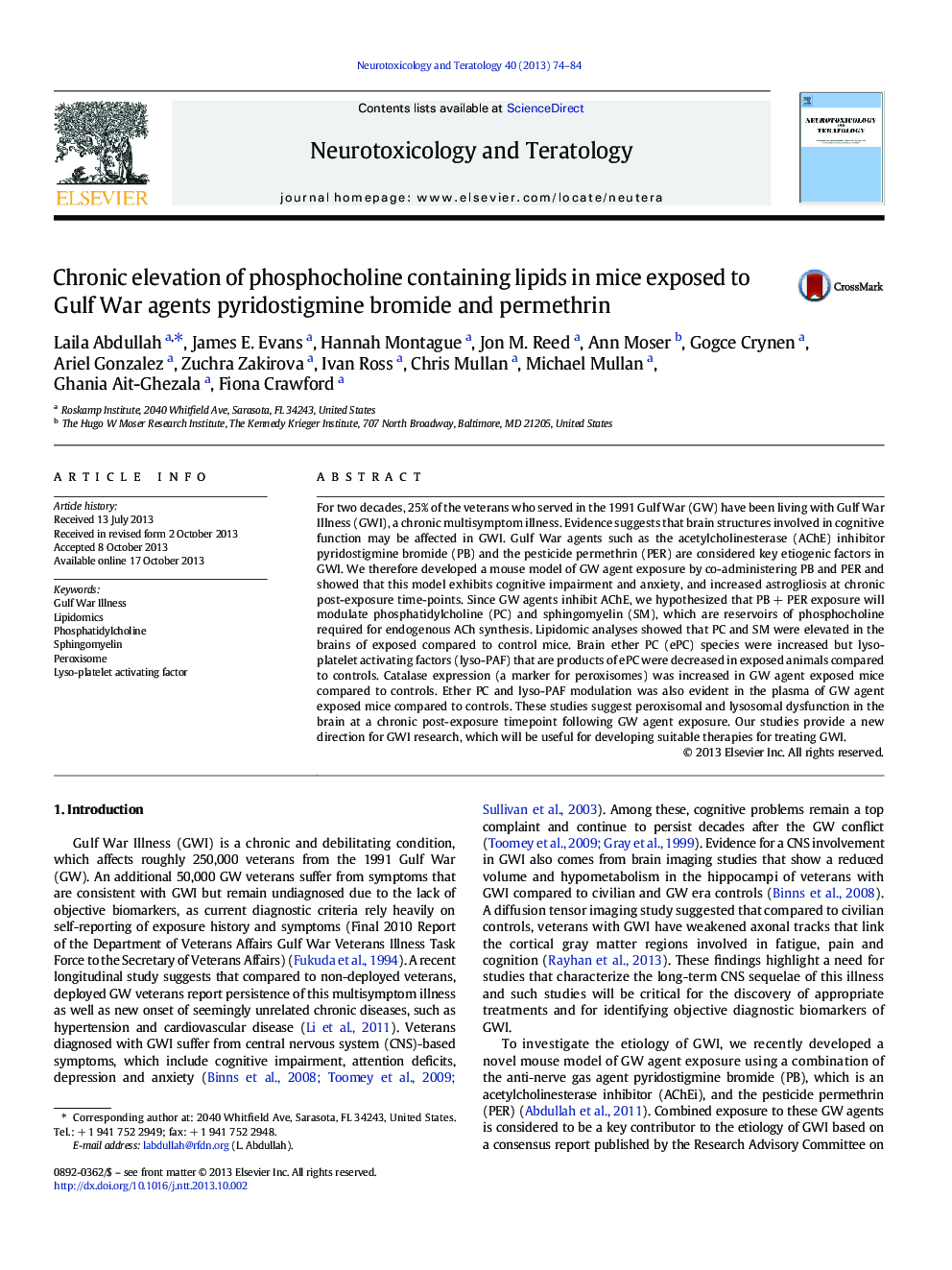| کد مقاله | کد نشریه | سال انتشار | مقاله انگلیسی | نسخه تمام متن |
|---|---|---|---|---|
| 2591065 | 1562095 | 2013 | 11 صفحه PDF | دانلود رایگان |

• Lipid metabolism is disturbed in a mouse model of Gulf War (GW) agent exposure.
• Lipidomics showed accumulation of diacyl and ether phosphatidylcholine in a mouse model of GWI.
• Sphingomyelin species are also increased following GW agent exposure.
• Results suggest peroxisomal and lysosomal impairment following GW agent exposure.
For two decades, 25% of the veterans who served in the 1991 Gulf War (GW) have been living with Gulf War Illness (GWI), a chronic multisymptom illness. Evidence suggests that brain structures involved in cognitive function may be affected in GWI. Gulf War agents such as the acetylcholinesterase (AChE) inhibitor pyridostigmine bromide (PB) and the pesticide permethrin (PER) are considered key etiogenic factors in GWI. We therefore developed a mouse model of GW agent exposure by co-administering PB and PER and showed that this model exhibits cognitive impairment and anxiety, and increased astrogliosis at chronic post-exposure time-points. Since GW agents inhibit AChE, we hypothesized that PB + PER exposure will modulate phosphatidylcholine (PC) and sphingomyelin (SM), which are reservoirs of phosphocholine required for endogenous ACh synthesis. Lipidomic analyses showed that PC and SM were elevated in the brains of exposed compared to control mice. Brain ether PC (ePC) species were increased but lyso-platelet activating factors (lyso-PAF) that are products of ePC were decreased in exposed animals compared to controls. Catalase expression (a marker for peroxisomes) was increased in GW agent exposed mice compared to controls. Ether PC and lyso-PAF modulation was also evident in the plasma of GW agent exposed mice compared to controls. These studies suggest peroxisomal and lysosomal dysfunction in the brain at a chronic post-exposure timepoint following GW agent exposure. Our studies provide a new direction for GWI research, which will be useful for developing suitable therapies for treating GWI.
Journal: Neurotoxicology and Teratology - Volume 40, November–December 2013, Pages 74–84